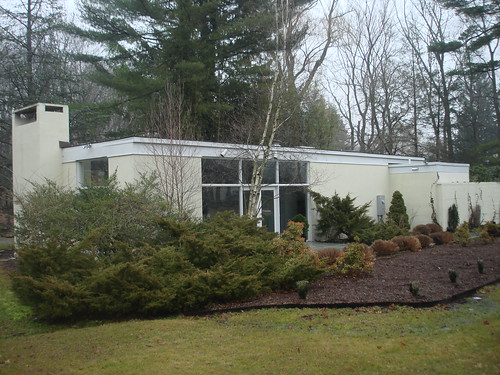
For those of you who are either not worried about vertigo or who are looking for a place to film a scene for a James Bond movie, this 3000-aquare-foot revolving house, at 122 Olmstead Hill Road, Wilton, Connecticut, might be ideal.
It was designed by Richard Foster, who collaborated with Philip Johnson on other projects and who, in fact, built it for himself in 1967 and lived there until his death, in 2002.
I don't think there's a rush to put in a bid though. It sold in 2004 for $1,550,000 after being listed for about a million dollars more. In 2005 the current owner listed it at $2,295,000 and withdrew it in December of 2006, after it failed to sell. Then it was put on the market again in January of 2007, for the same price.
I first heard of it in December of '07 and now brokers are pushing it again. But the price hasn't gone down: it's still listed at $2,295,000. The property taxes are $17,000.
Here's the broker's hyperbolic description:
This truly one-of-a-kind marriage of art, architecture, and technology by Richard T. Foster, renowned architect and collaborator of Philip Johnson, is a masterpiece that captures the wonder of landscape from all angles. Totally renovated in 2005, "The Round
House" is walled in glass and floats 12 ft. off the ground rotating 360 degrees. It incorporates custom ash cabinetry, state-of-the-art Zenon interior lighting, luxurious marble & limestone baths, "Smart House" technology in the main house & studio, and a new gunite lap pool by Wagner that overlooks the surrounding landscape. A setting for both casual & formal entertaining, visitors are fascinated by this rare concept of living. -- ta





























